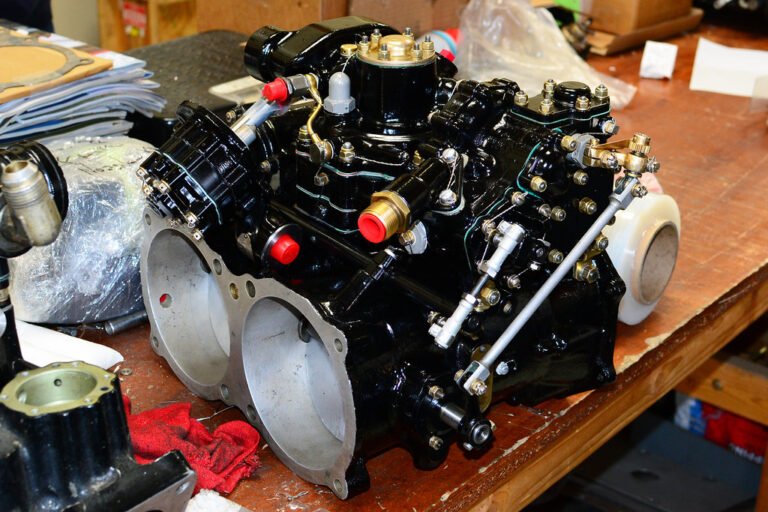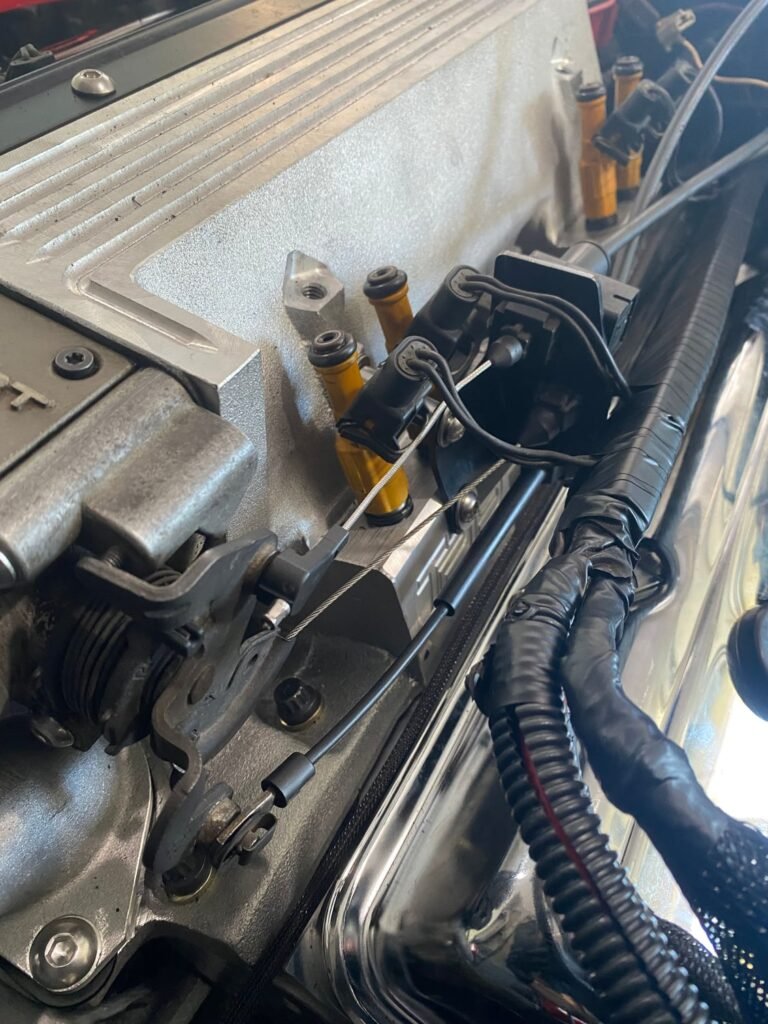How to Adjust Carburetor on 2 Cycle Engine: Quick Tips!
To adjust the carburetor on a 2 cycle engine, locate the adjustment screws and turn them to achieve the correct air-fuel mixture. Use a tachometer for precise settings.
Adjusting the carburetor on a 2 cycle engine ensures optimal performance and fuel efficiency. This process involves fine-tuning the air and fuel mixture, which is crucial for the engine’s smooth operation. Typically, two screws control the mixture: the low-speed screw for idle adjustments and the high-speed screw for full throttle.
Proper adjustment not only enhances engine performance but also prolongs its lifespan. Regular maintenance, including carburetor tuning, prevents issues such as poor acceleration, stalling, and excessive fuel consumption. Following a systematic approach can make the task straightforward and effective.
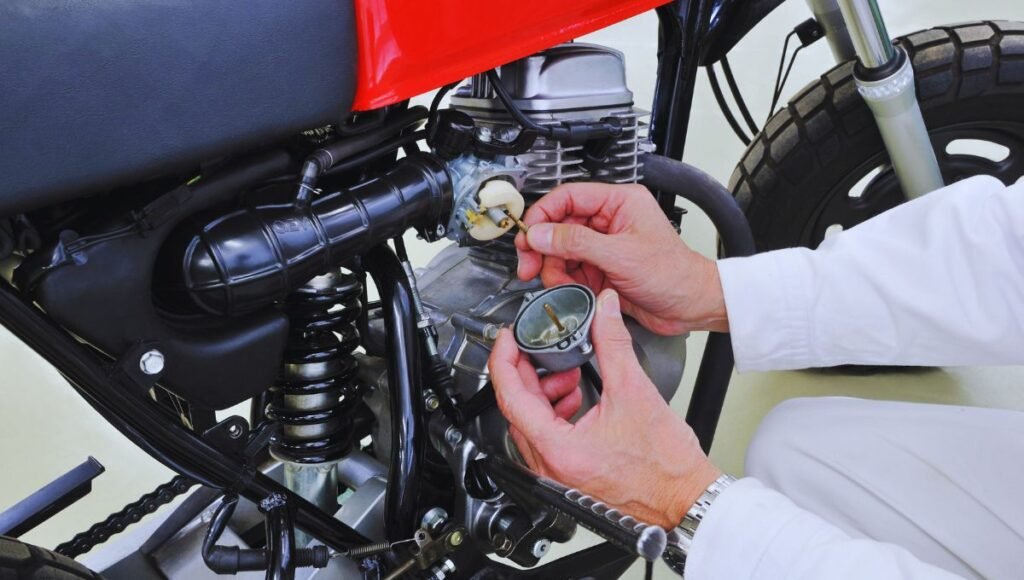
Introduction To Carburetor Adjustment On 2 Cycle Engines
Adjusting the carburetor on a 2 cycle engine is crucial. It ensures the engine runs smoothly and efficiently. A well-adjusted carburetor can improve performance. It also extends the engine’s lifespan.
The Role Of The Carburetor
The carburetor mixes air and fuel for the engine. It controls the engine’s speed and power. A proper mix ensures optimal performance. Too much fuel can flood the engine. Too much air can cause overheating.
Signs Your Carburetor Needs Adjustment
- Engine stalls frequently
- Poor acceleration
- Excessive smoke from exhaust
- Engine runs too hot
- Difficulty starting the engine
| Sign | Description |
|---|---|
| Engine stalls frequently | The engine stops unexpectedly. |
| Poor acceleration | Engine does not pick up speed quickly. |
| Excessive smoke from exhaust | Too much smoke coming out. |
| Engine runs too hot | Engine temperature is too high. |
| Difficulty starting the engine | Engine takes time to start. |
Noticing these signs early can prevent major issues. Regularly adjusting the carburetor can keep your engine running smoothly.
Essential Tools For Carburetor Adjustment
Adjusting the carburetor on a 2-cycle engine requires specific tools. These tools ensure precise adjustments and optimal engine performance. This section covers the essential tools needed to make the task easier and more efficient.
Adjustment Screws And Their Functions
Understanding adjustment screws is crucial. There are usually three types of screws:
- High-Speed Screw (H): Adjusts the fuel mixture at high speeds.
- Low-Speed Screw (L): Controls fuel mixture at low speeds.
- Idle Screw (T): Sets the engine’s idle speed.
Required Tools For The Task
You need the right tools for carburetor adjustment. Here’s a list of essential tools:
| Tool | Function |
|---|---|
| Flathead Screwdriver | Adjusts the screws |
| Phillips Screwdriver | Removes carburetor covers |
| Tachometer | Measures engine RPM |
| Carburetor Adjustment Tool | Special tool for specific screw types |
Having these tools ready can save you time and effort.
Safety First: Preparing For Adjustment
Adjusting the carburetor on a 2-cycle engine can improve performance. Before starting, prioritize safety. Wear the right gear and let the engine cool.
Protective Gear
Wearing protective gear is crucial when working on engines. Always wear safety goggles to protect your eyes from debris. Gloves can shield your hands from hot surfaces and sharp edges. Ear protection helps reduce noise exposure. Below is a table outlining essential protective gear:
| Gear | Purpose |
|---|---|
| Safety Goggles | Protect eyes from debris |
| Gloves | Shield hands from heat and sharp edges |
| Ear Protection | Reduce noise exposure |
Engine Cooling Period
Allow the engine to cool before adjustment. A hot engine can cause burns. Follow these steps for a safe cooling period:
- Turn off the engine and remove the key.
- Wait at least 15-20 minutes for the engine to cool.
- Check the engine temperature by touching it briefly with your hand.
Ensuring the engine is cool prevents accidental burns. This step is crucial for safe carburetor adjustment.
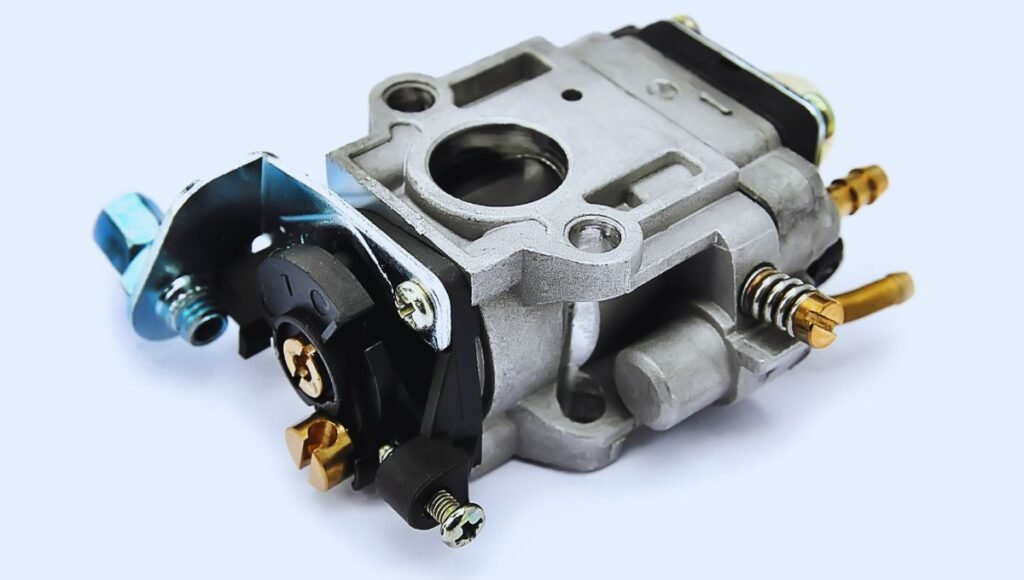
Locating The Carburetor On Your 2 Cycle Engine
The carburetor is a crucial part of your 2 cycle engine. It controls the mix of air and fuel. Proper adjustment ensures optimal engine performance.
Identifying The Carburetor Components
Locate the carburetor on the side of the engine. It has several key components:
- Throttle Valve: Controls engine speed.
- Choke Lever: Helps start the engine in cold conditions.
- Fuel Inlet: Connects to the fuel line.
Refer to your engine manual for a detailed diagram. This ensures you identify each part correctly.
Accessing The Adjustment Screws
The carburetor has two main adjustment screws:
- Low-Speed Screw: Adjusts fuel mix at idle.
- High-Speed Screw: Adjusts fuel mix at full throttle.
These screws are usually marked with an “L” and “H”. Locate them on the side of the carburetor. Use a small flathead screwdriver for adjustments. Ensure the engine is off before making any changes.
Consult your manual for specific adjustment instructions. Each engine model may have different settings.
| Component | Function |
|---|---|
| Throttle Valve | Controls engine speed |
| Choke Lever | Helps start the engine in cold conditions |
| Fuel Inlet | Connects to the fuel line |
The Warm-up Phase
The warm-up phase is crucial for adjusting your carburetor. It ensures your engine runs smoothly. Proper warming helps avoid engine damage.
Starting The Engine
Start by placing your engine on a flat surface. This helps with stability. Check the fuel level in the tank. Make sure it’s filled properly.
Next, locate the choke lever on your engine. Engage the choke to start the engine. Pull the starter rope firmly until the engine starts.
Once the engine starts, disengage the choke. Let the engine idle for a minute. This helps the engine warm up slowly.
Achieving Optimal Operating Temperature
Let the engine run for about 5 minutes. This allows it to reach its optimal temperature. Avoid revving the engine during this time.
Check the engine temperature by feeling the muffler. It should be warm, not hot. If it’s too hot, let it cool down slightly.
Maintain a steady idle during warm-up. This ensures the carburetor adjusts properly. Avoid making adjustments before the engine is warm.
Here’s a quick summary of the warm-up steps:
- Place engine on a flat surface
- Check fuel level
- Engage the choke
- Pull starter rope
- Disengage choke after starting
- Idle engine for 1 minute
- Run engine for 5 minutes
- Check temperature
Warming up the engine is key. This simple step ensures better performance.
Adjusting The Idle Speed Screw
Adjusting the idle speed screw on a 2 cycle engine is crucial. It ensures smooth and efficient operation. This adjustment controls the engine’s idle speed. Follow the steps below to adjust the idle speed screw.
Finding The Ideal Idle Setting
First, locate the idle speed screw on your carburetor. It is usually marked with an “I” or “T”. Start your engine and let it warm up. Use a tachometer to measure the engine’s RPM. Adjust the screw clockwise to increase the RPM. Turn it counterclockwise to decrease the RPM. Your goal is to find a steady idle speed. This speed is typically between 1,500 and 2,000 RPM.
Troubleshooting Idle Issues
If the engine stalls, your idle speed may be too low. Turn the idle screw clockwise until the engine runs smoothly. If the engine idles too high, turn the screw counterclockwise. Check for air leaks in the carburetor. Air leaks can cause erratic idling. Ensure the fuel mixture is correct. A lean mixture can also affect idle speed. Replace any damaged parts. Regular maintenance keeps the engine in good condition.
Tuning The High-speed And Low-speed Screws
Adjusting the high-speed and low-speed screws on a 2-cycle engine is crucial. This process ensures your engine runs smoothly and efficiently. Proper tuning can enhance performance, reduce fuel consumption, and extend engine life.
Adjusting For Performance At High Speeds
High-speed screws control fuel flow at full throttle. Adjusting them correctly is essential for optimal engine power.
- Start the engine and let it warm up.
- Locate the high-speed screw, usually marked as “H”.
- Turn the screw clockwise until it seats gently. Do not over-tighten.
- Then, turn the screw counterclockwise one and a half turns.
- Rev the engine to full throttle. Listen to the engine sound.
- Adjust the screw slightly clockwise for more fuel or counterclockwise for less fuel.
- Find the sweet spot where the engine runs smoothly at high speed.
Note: Always make small adjustments and listen to the engine’s response.
Fine-tuning For Smooth Low-speed Operation
Low-speed screws control fuel flow at idle and low RPMs. Proper adjustment ensures a smooth idle and quick acceleration.
- Locate the low-speed screw, usually marked as “L”.
- Turn the screw clockwise until it seats gently. Do not over-tighten.
- Then, turn the screw counterclockwise one and a half turns.
- Start the engine and let it idle.
- Listen to the engine. If it sputters or stalls, adjust the screw slightly.
- Turn the screw clockwise for a richer mix or counterclockwise for a leaner mix.
- Find the balance where the engine idles smoothly and accelerates without hesitation.
Tip: Making small, incremental adjustments and testing the engine’s response can help achieve the best performance.
| Screw | Initial Setting | Adjustment Direction | Purpose |
|---|---|---|---|
| High-Speed (H) | 1.5 turns counterclockwise | Clockwise for more fuel, counterclockwise for less | Full throttle performance |
| Low-Speed (L) | 1.5 turns counterclockwise | Clockwise for richer mix, counterclockwise for leaner | Idle and low RPM performance |
Proper tuning of both screws ensures your engine runs at its best. Always listen and adjust carefully for optimal results.
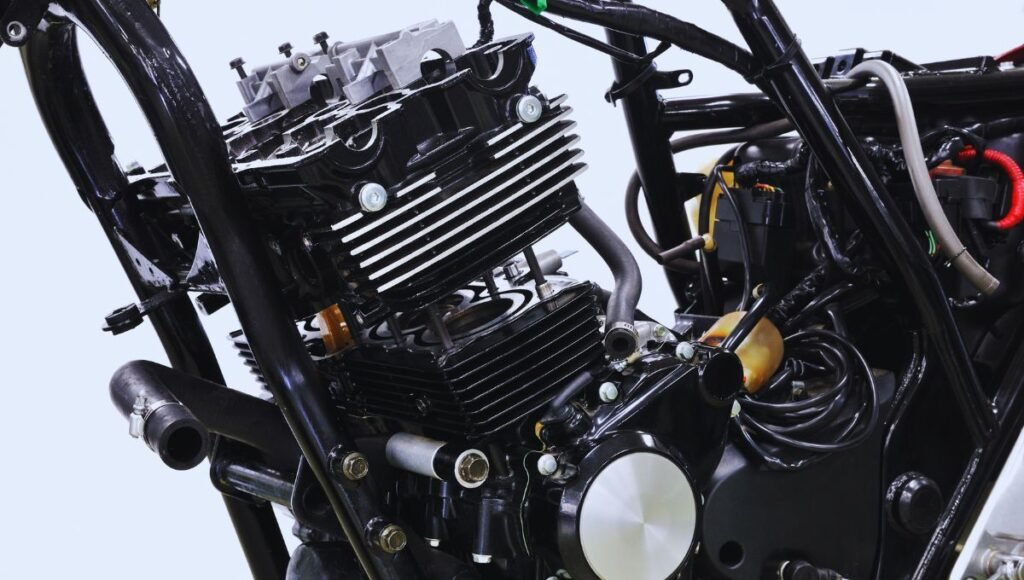
Final Checks And Test Run
After adjusting the carburetor on your 2-cycle engine, it’s crucial to perform final checks and a test run. These steps ensure your engine runs smoothly and efficiently. Let’s dive into the final stages of this process.
Verifying The Adjustments
First, you need to verify the adjustments you made. This ensures everything is set correctly.
- Check the idle speed. It should be stable and consistent.
- Ensure the engine doesn’t stall at low speeds.
- Inspect the fuel mixture. It should be balanced.
Use a screwdriver to fine-tune the settings if necessary. Turn the screws slightly to make precise adjustments.
Performing A Functionality Test
Next, perform a functionality test to confirm your adjustments.
- Start the engine and let it warm up for a few minutes.
- Rev the engine to check the response. It should be smooth.
- Listen for any unusual sounds like knocking or misfires.
- Check the exhaust. It should be clear and smoke-free.
If everything seems fine, your carburetor adjustment is successful. If not, revisit the previous steps and make necessary tweaks.
By following these steps, you ensure your 2-cycle engine runs at its best. Proper adjustment leads to better performance and longer engine life.
Maintenance Tips For Optimal Carburetor Performance
Maintaining your 2 cycle engine’s carburetor ensures long-lasting performance. Regular upkeep can prevent many common issues. Below are some essential tips for optimal carburetor maintenance.
Regular Cleaning Schedule
Keeping the carburetor clean is crucial. A dirty carburetor can cause engine problems. Follow these steps for a regular cleaning routine:
- Remove the air filter and housing.
- Use a carburetor cleaner spray to remove debris.
- Check the jets and passages for blockages.
- Reassemble the air filter and housing.
Cleaning every 20 hours of use helps. This prevents buildup and ensures smooth operation.
Spotting Wear And Tear
Identifying wear and tear early can save you from bigger problems. Here are signs to look for:
- Engine stalling or running rough.
- Fuel leaks around the carburetor.
- Visible cracks or damage to the carburetor body.
Replace worn-out parts immediately. This keeps the engine running efficiently.
Using this simple maintenance guide helps keep your 2 cycle engine’s carburetor in top shape. Regular cleaning and spotting wear and tear are key to optimal performance.
Troubleshooting Common Carburetor Issues
Working with a 2-cycle engine can sometimes be tricky, especially if you face carburetor issues. A well-functioning carburetor is essential for smooth engine performance. In this section, we’ll address common problems and offer solutions.
Solving Fuel Mixture Problems
A common issue with carburetors is the fuel mixture. If your engine runs rough or stalls, the fuel mixture might be off.
- Check the fuel-to-oil ratio. Ensure it’s correct for your engine.
- Adjust the carburetor screws. Locate the high and low-speed screws on your carburetor.
- Turn the screws slightly to achieve the right mixture. Usually, a 1/4 turn is enough.
If your engine smokes a lot, the mixture might be too rich. If it sputters, it might be too lean. Adjust accordingly.
Dealing With Starting Difficulties
Starting problems are another common carburetor issue. If your engine struggles to start, the carburetor might need attention.
- Ensure the choke is in the correct position.
- Prime the engine properly. Too much or too little can affect starting.
- Inspect the spark plug. A dirty spark plug can make starting difficult.
If the engine still won’t start, the carburetor might need cleaning. Remove it and clean all parts thoroughly.
| Issue | Possible Cause | Solution |
|---|---|---|
| Engine stalls | Incorrect fuel mixture | Adjust carburetor screws |
| Engine smokes | Rich fuel mixture | Lean the mixture |
| Engine won’t start | Dirty spark plug | Clean or replace spark plug |
Follow these steps to keep your engine running smoothly. Regular maintenance can prevent most carburetor issues.
When To Seek Professional Help
Adjusting the carburetor on a 2 cycle engine can be tricky. Sometimes, it is best to seek professional help. Understanding when to get expert assistance can save time and prevent damage.
Complex Adjustments And Repairs
Some carburetor issues are too complex for DIY repairs. Advanced problems include:
- Persistent idling issues
- Frequent stalling
- Inconsistent engine performance
These problems often need specialized tools and knowledge. Attempting to fix them without expertise can worsen the issue. It’s wise to let a professional handle these repairs.
Benefits Of Expert Services
Seeking expert services offers many benefits:
- Precision: Experts have the right tools for accurate adjustments.
- Experience: Professionals have handled many similar issues before.
- Warranty: Many services offer warranties on their work.
- Safety: Proper repairs can prevent dangerous malfunctions.
Relying on professionals ensures your engine runs smoothly and safely. It can also extend the life of your equipment.
Frequently Asked Questions
What Tools Are Needed To Adjust A Carburetor?
To adjust a carburetor, you need a screwdriver, a tachometer, and sometimes a small wrench. Ensure you have safety gear.
How Do You Know If A Carburetor Needs Adjustment?
A carburetor needs adjustment if the engine idles roughly, stalls, or has poor acceleration. Check fuel and air mixture.
Can I Adjust The Carburetor Myself?
Yes, you can adjust it yourself with the right tools and instructions. Follow the manufacturer’s guidelines for best results.
What Are The Steps To Adjust A Carburetor?
First, locate the adjustment screws. Then, adjust idle speed and mixture screws. Finally, fine-tune until the engine runs smoothly.
Conclusion
Mastering carburetor adjustment on a 2 cycle engine boosts performance. Follow our guide for smooth and efficient operation. Regular maintenance ensures longevity and reliability. Tuning your engine correctly saves fuel and reduces emissions. Enjoy a powerful and well-functioning engine by applying these simple steps.
Keep your engine in top shape for the best results.

At AdjustCarburetor, we are passionate about optimizing engine performance and sharing our expertise in carburetors, small engines, fuel injection systems, air-fuel ratios, and ignition timing solutions

